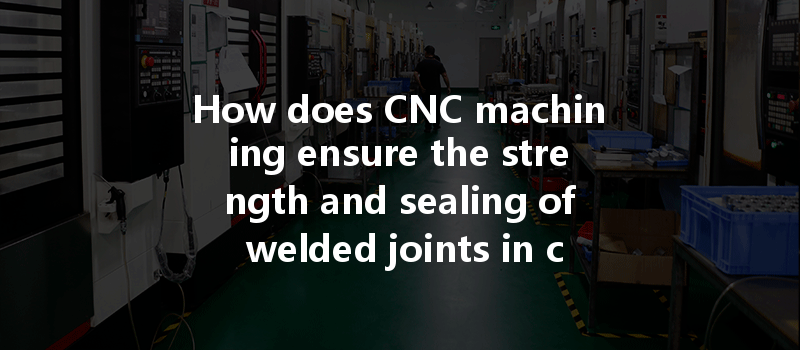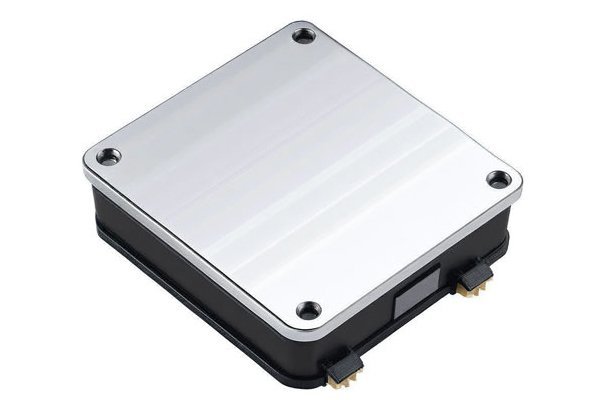Did you know that the global CNC machining market is projected to reach $100 billion by 2025? This figure underscores the increasing reliance on CNC machining in various industries such as aerospace, automotive, and medical, especially when creating complex components that require high strength and precise welding capabilities. But how does CNC machining achieve such high standards, particularly in the strength and sealing of welded joints in complex parts? This question leads us into an in-depth exploration of the fascinating world of CNC machining and its crucial role in ensuring the integrity of welded joints.
Understanding CNC Machining
CNC (Computer Numerical Control) machining is a manufacturing process that uses computer-controlled machines to shape and mold materials like metal and plastic into precise parts. The technology allows for intricate designs created through CAD (Computer-Aided Design) software to be brought to life. From automotive components to aerospace parts, CNC machining is integral to modern manufacturing.
One of the significant advantages of CNC machining is its ability to produce high-quality, repeatable parts with exceptional accuracy. However, when it comes to welding and the integrity of those welds, a deeper understanding of the process and techniques involved is essential.
The Importance of Weld Joint Strength and Sealing
Welds are critical in the assembly of parts, especially in applications that experience high stress, vibration, or thermal cycling. Weld joint strength ensures the joints can withstand operational loads without failure, while the sealing aspect prevents leakage of fluids and gases. Therefore, the quality of welding significantly affects the performance and longevity of complex parts.
Key Factors Influencing Weld Strength and Sealing
CNC Machining Techniques for Effective Welding
To achieve strong and sealed welded joints, several CNC machining techniques are applied throughout the manufacturing process. Let’s explore these methods in more detail.
Proper joint preparation is vital to effective welding. CNC machining allows for precise shaping and alignment of parts so that the joint surfaces are smooth and properly fit together. Techniques like beveling can be incorporated using CNC mills, which prepares the edges for welding and allows for deeper penetration of the weld.
CNC machines equipped with advanced technology can automatically adjust welding parameters such as voltage, current, travel speed, and gas flow during the welding process. This control leads to consistent results and minimizes the chances of defects that can compromise joint strength.
Complex parts often require welding in various orientations. CNC machines, especially multi-axis ones, excel in handling these intricate tasks. This flexibility allows for welding that suits the configuration of the joint, enhancing the strength and sealing of the weld.
Quality Assurance Throughout the Welding Process
Ensuring the quality and integrity of welds requires stringent quality control measures at every step of the process. Here are some of the methods employed in CNC machining for quality assurance:
Modern CNC machining systems with integrated sensors can monitor the welding process in real-time. This technology ensures that parameters stay within predetermined limits, quickly identifying any abnormalities. If temperature or pressure begins to deviate, immediate corrective actions can be taken.

After welding, nondestructive testing methods such as ultrasonic tests or dye penetrant tests are often employed to inspect the integrity of welded joints. These tests ensure that any potential flaws are addressed before parts go into full-scale production.
Maintaining a traceable record of materials, parameters, and test results is essential for identifying issues and ensuring compliance with industry standards. CNC machining facilities maintain comprehensive documentation, which is critical for quality control and future reference.
Case Studies: Successful Applications of CNC Machining
To illustrate the effectiveness of CNC machining in ensuring strong welded joints, let’s look at some real-world applications.
Case Study 1: Aerospace Components
In the aerospace industry, the integrity of welded joints is paramount. A prominent aerospace manufacturer implemented CNC machining technology to produce engine mounts with precise joint fits. By employing multi-axis milling and TIG welding, they achieved welded joints that surpassed strength requirements, resulting in lighter and more fuel-efficient engine designs.
Case Study 2: Automotive Industry Innovations
An automotive parts manufacturer adopted CNC machining for the production of exhaust systems. By utilizing advanced welding techniques and real-time monitoring systems, they significantly improved the durability of their components, reducing warranty claims related to joint failures.
Advanced Technologies Enhancing CNC Machining Weld Quality
With the evolution of technology, several advanced techniques have emerged that complement CNC machining in achieving superior welding strength and sealing.
Laser welding offers exceptional precision and is ideal for thin materials that require minimal heat input. It helps in achieving small, strong welds that maintain the integrity of the parent material, enhancing strength and preventing distortion.
Integrating robotics with CNC machining provides faster and more consistent welding results. Robots can perform repetitive welding tasks with great reliability, ensuring uniform weld quality across production runs.
The advent of Industry 4.0 introduces concepts of smart manufacturing where machines communicate and analyze data for optimized efficiency. CNC machining facilities can employ predictive maintenance and advanced analytics to improve welding processes continuously.
Training and Skill Development in CNC Machining
To harness the full potential of CNC machining for welding applications, investing in skilled personnel is crucial. Training programs focusing on CNC programming, material science, and welding techniques ensure that operators possess the necessary expertise to handle complex tasks effectively.
: The Path Forward
In summary, ensuring the strength and sealing of welded joints in complex parts is a multi-faceted challenge addressed by CNC machining technology. Comprehensive strategies encompass effective joint preparation, controlled welding parameters, and robust quality assurance practices. As industries continue to demand higher precision and stronger components, understanding the intricacies involved in CNC machining and its welding capabilities becomes crucial.
As we’ve explored through case studies and advanced techniques, the intersection of CNC machining and welding reveals not just possibilities, but essential techniques for innovation across sectors. The strength of welded joints is not only about the immediate performance but contributes to long-term durability and reliability—in sectors where they are critical, this is a profound necessity.
Therefore, for businesses engaged in manufacturing complex parts, recognizing the importance of CNC machining in welding processes is vital. Evaluating your current welding practices in light of these techniques can yield significant benefits, leading to greater efficiency, reduced costs, and the ability to meet and exceed industry standards.
As the market evolves, keeping abreast of these advancements is not just beneficial—it’s essential. Implementing these techniques in your welding processes today will not only enhance your product offerings but solidify your place in an increasingly competitive landscape.






